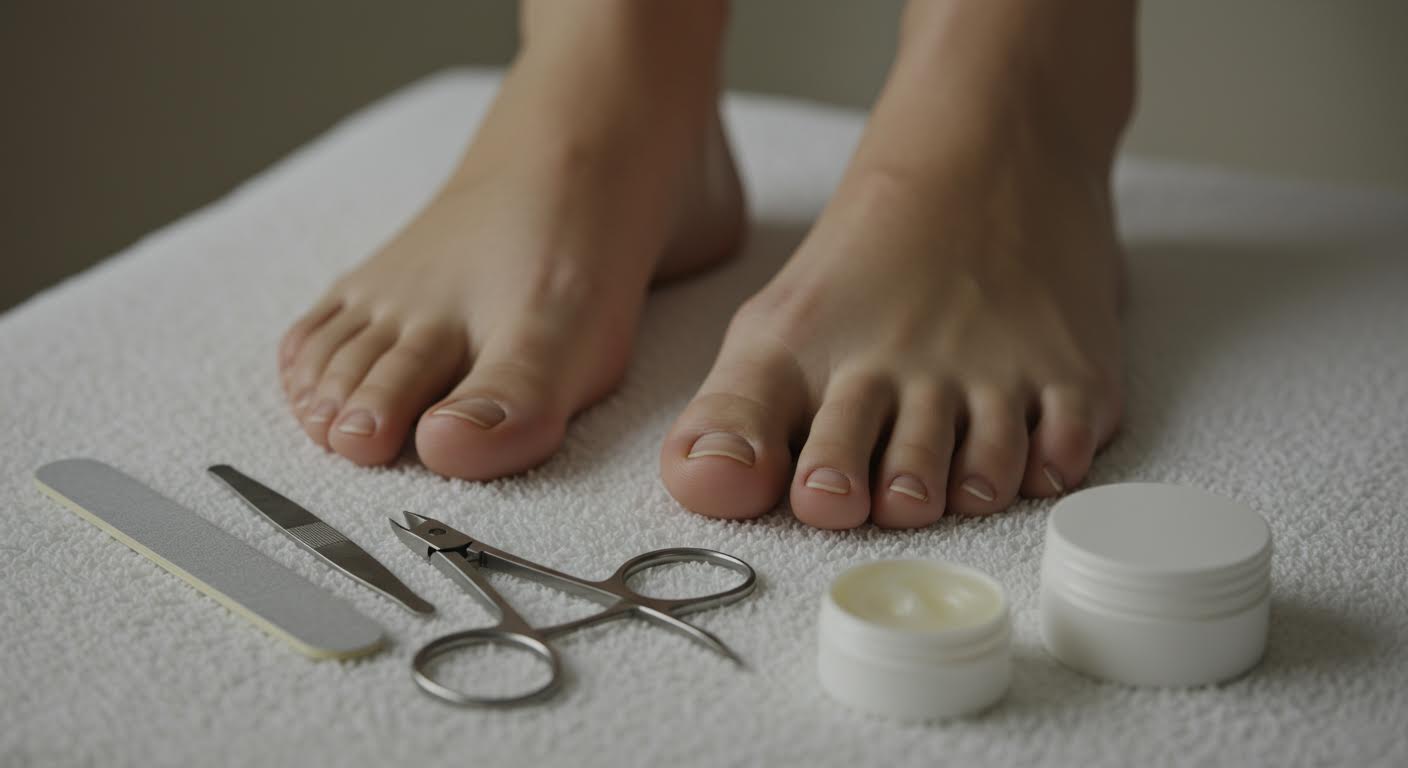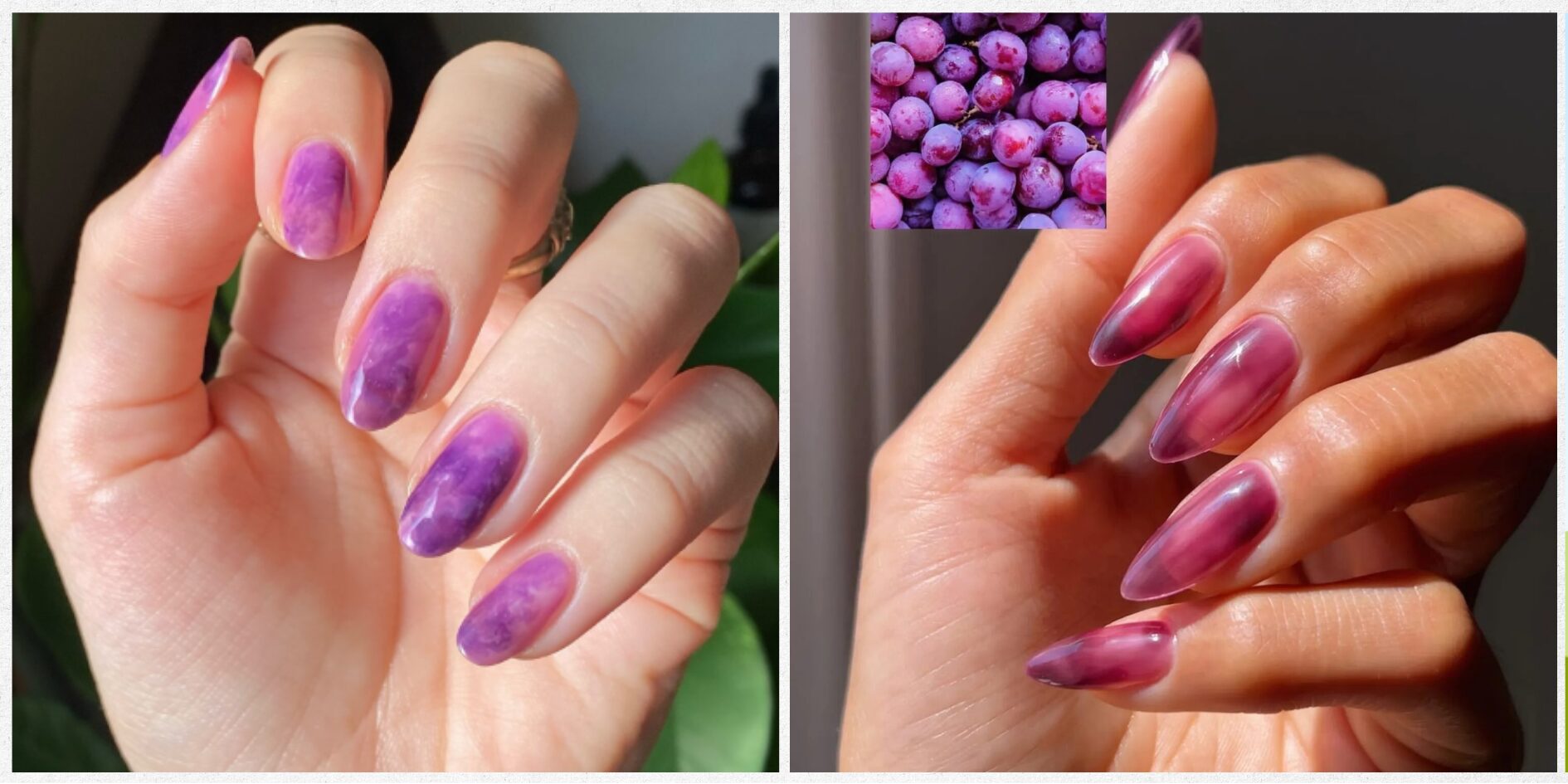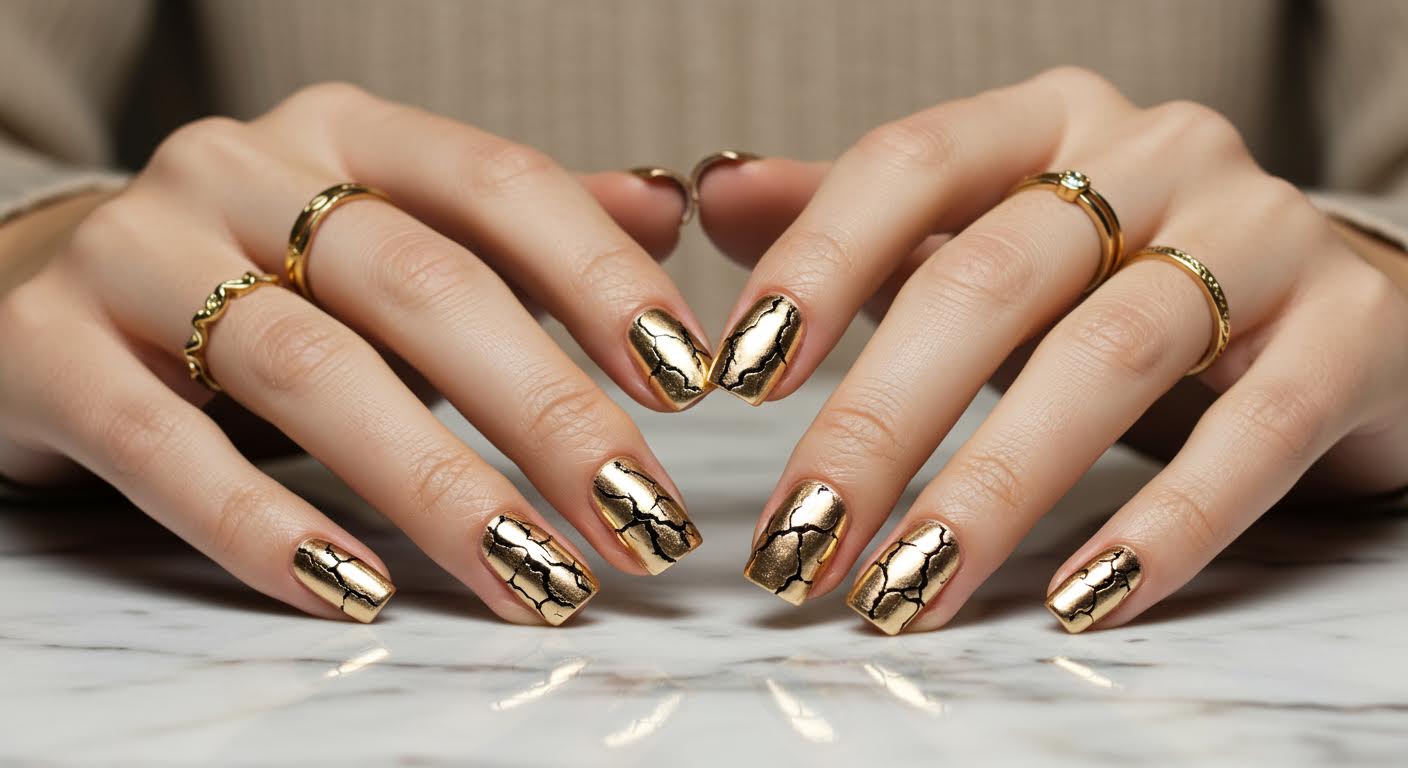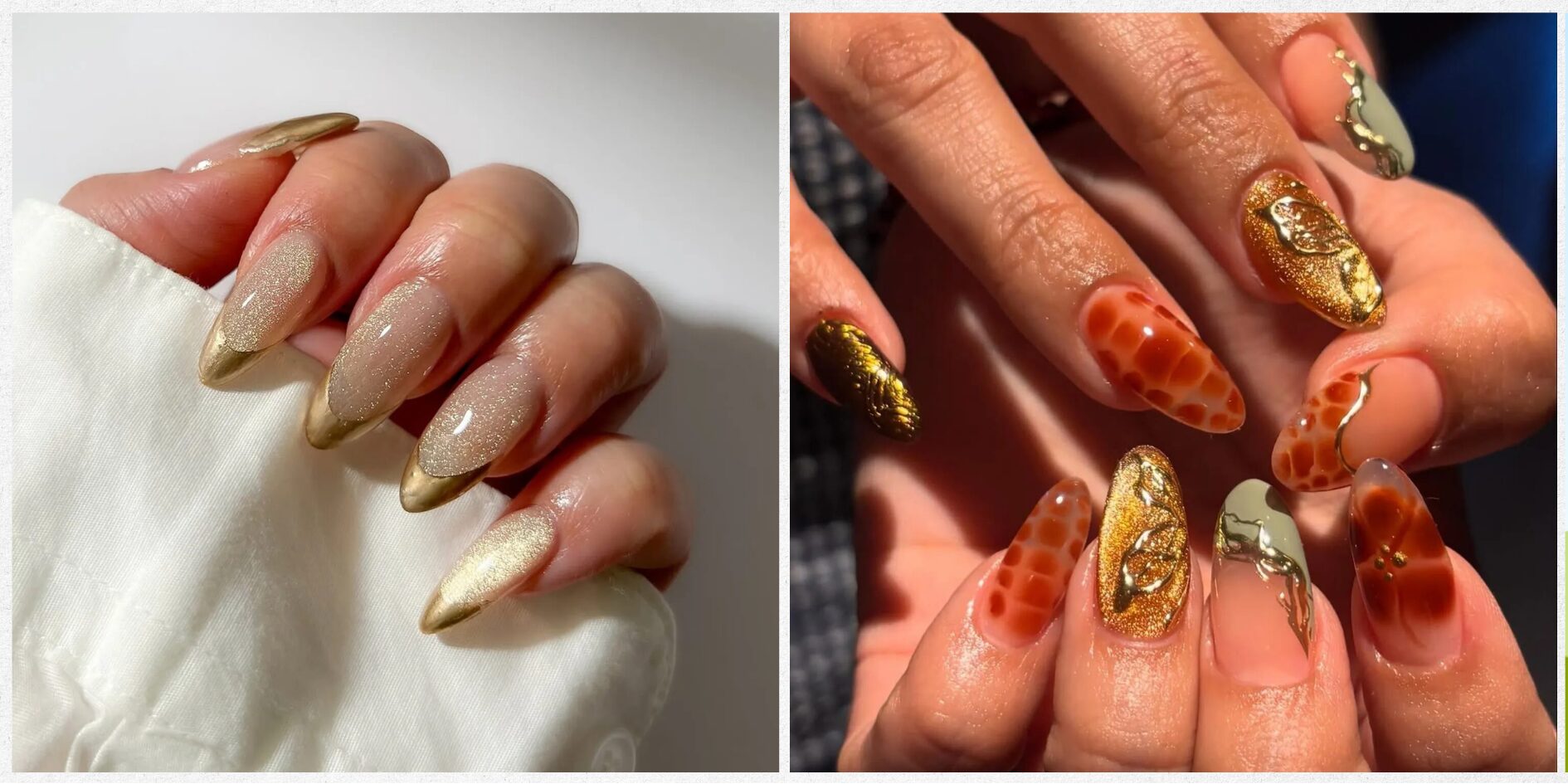Ingrown Toenail Remedies The Best Home Treatments to Try
Table of Contents
Ingrown toenails can cause pain, swelling, and redness—and if ignored, may lead to infections. While mild cases often improve with simple home remedies, severe or recurring cases might require medical care or even surgery.
This guide covers everything you need to know about ingrown toenail remedies at home, medical treatments, and prevention tips to keep your feet healthy.
What Causes Ingrown Toenails?
An ingrown toenail happens when the edge or corner of a toenail grows into the surrounding skin, most often affecting the big toe.
Common Symptoms
- Pain and tenderness
- Redness and swelling
- Pus or foul odor if infected
- Fever (in severe cases)
Main Causes
- Toenail trauma (stubbing your toe)
- Shoes that are too tight or loose
- Cutting toenails too short or curved
- Sweaty feet (hyperhidrosis)
- Poor nail care habits
- Certain medications (like EGFR inhibitors)
⚠️ People with diabetes or poor circulation should be extra cautious, as foot complications can become serious quickly.
Home Remedies for Ingrown Toenails
1. Warm Water Soak
Soak the foot in warm soapy water for 15–20 minutes to reduce swelling and pain. Add Epsom salt for extra relief.
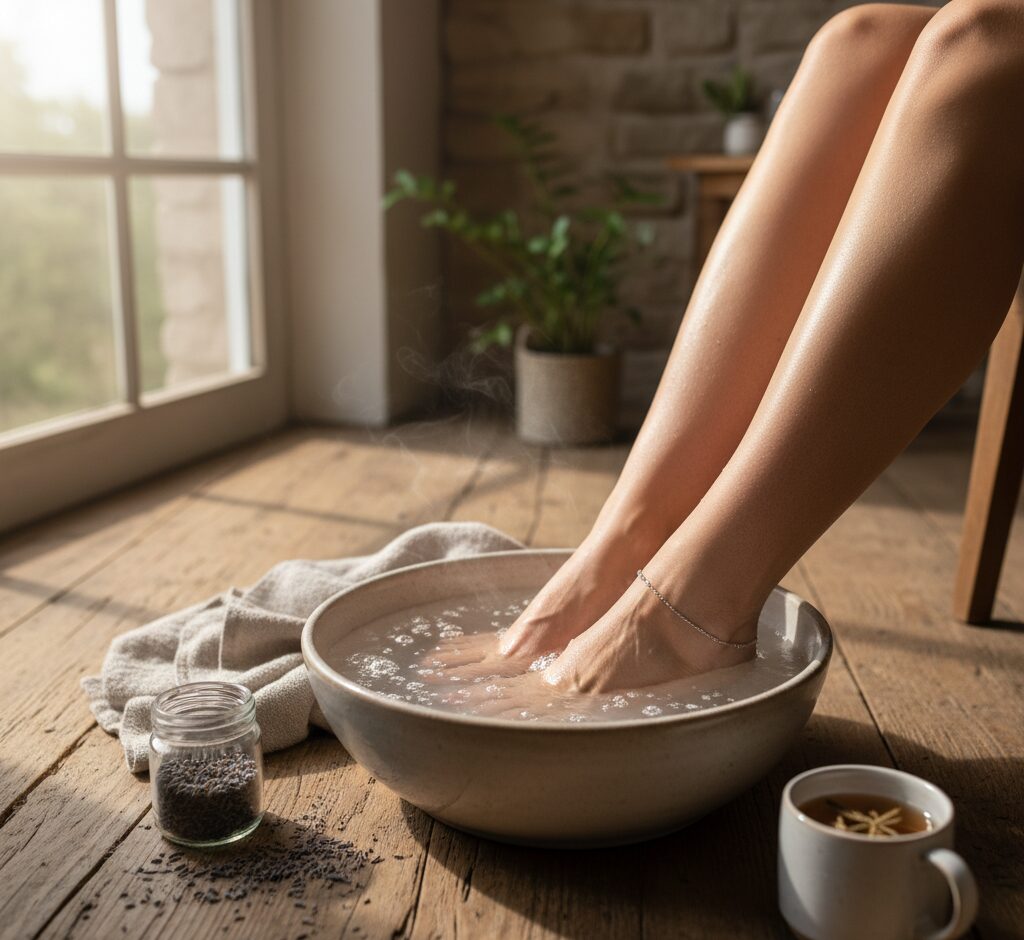
2. Apple Cider Vinegar Soak
ACV may have antimicrobial and anti-inflammatory properties.
- Mix 1/4 cup ACV in warm water.
- Soak for 20 minutes daily.
3. Over-the-Counter Ointments
Apply antiseptic ointments 2–3 times daily to prevent infection:
- Neosporin
- Polysporin
- Bactroban
⚠️ Stop if itching or allergic reaction occurs.
4. OTC Pain Relievers
- Acetaminophen (Tylenol): for pain relief.
- Ibuprofen (Advil): for pain + swelling.
Follow recommended dosages only.
5. Wear Comfortable Shoes & Socks
Avoid shoes that press toes together. Choose sandals or roomy footwear until the toenail heals.
6. Toe Protectors
Gel protectors cushion the nail and reduce irritation. Some contain medicated gel to soften nails.
7. Toe Braces
Thin braces lift the nail away from the skin and prevent further growth into the toe.
8. Dental Floss or Cotton (Use with Caution)
Some experts suggest placing cotton or floss under the nail to lift it.
⚠️ Risk: May trap bacteria → always sterilize with alcohol first.
Medical Treatments for Ingrown Toenails
Seek medical help if:
- You have diabetes or circulation issues
- Infection symptoms appear (pus, fever, spreading redness)
- Pain is severe or affects walking
Medical Options
- Oral antibiotics: For severe infections (amoxicillin, vancomycin).
- Partial nail removal: Doctor removes part of nail or nail bed.
- Complete nail removal: Last resort for recurring cases.
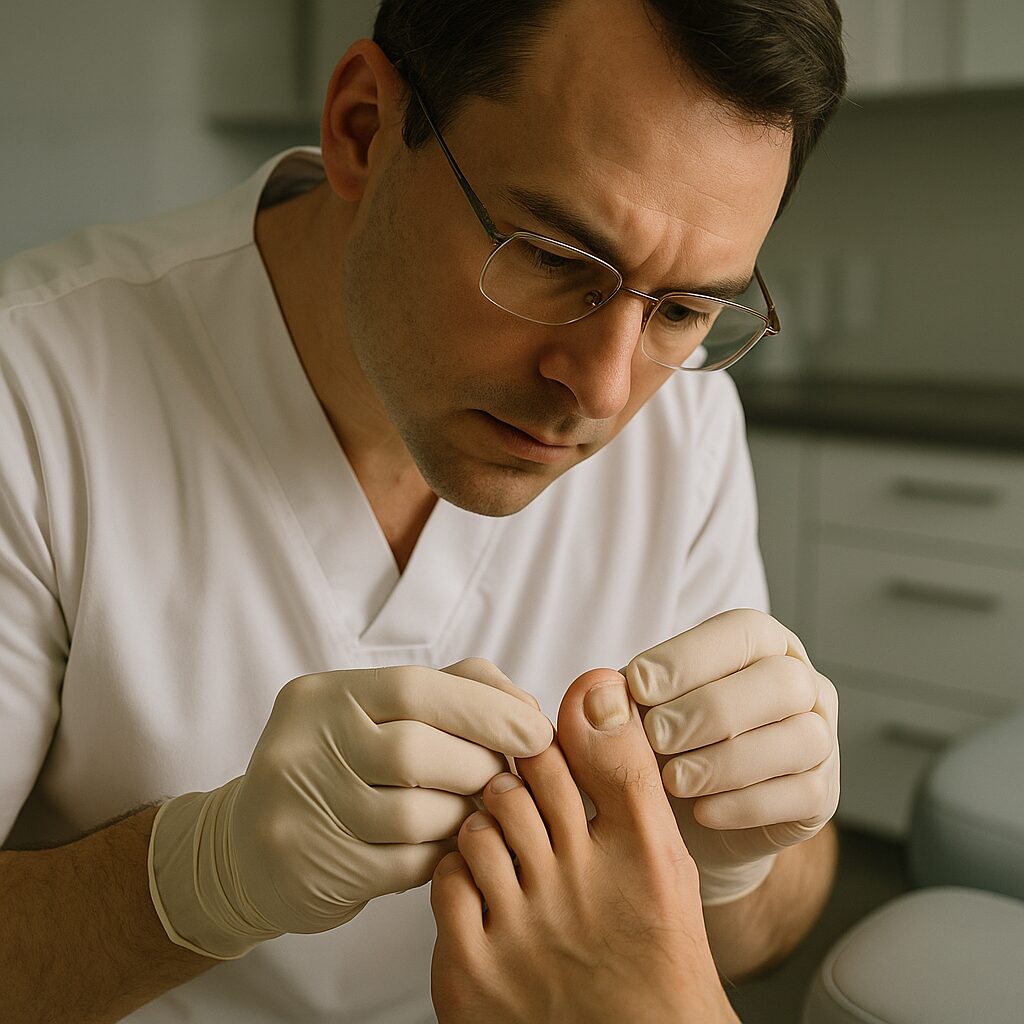
Prevention Tips
- Trim toenails straight across, not rounded.
- Don’t cut nails too short.
- Wear shoes with enough toe space.
- Keep feet clean and dry.
- Use protective footwear if at risk of trauma.
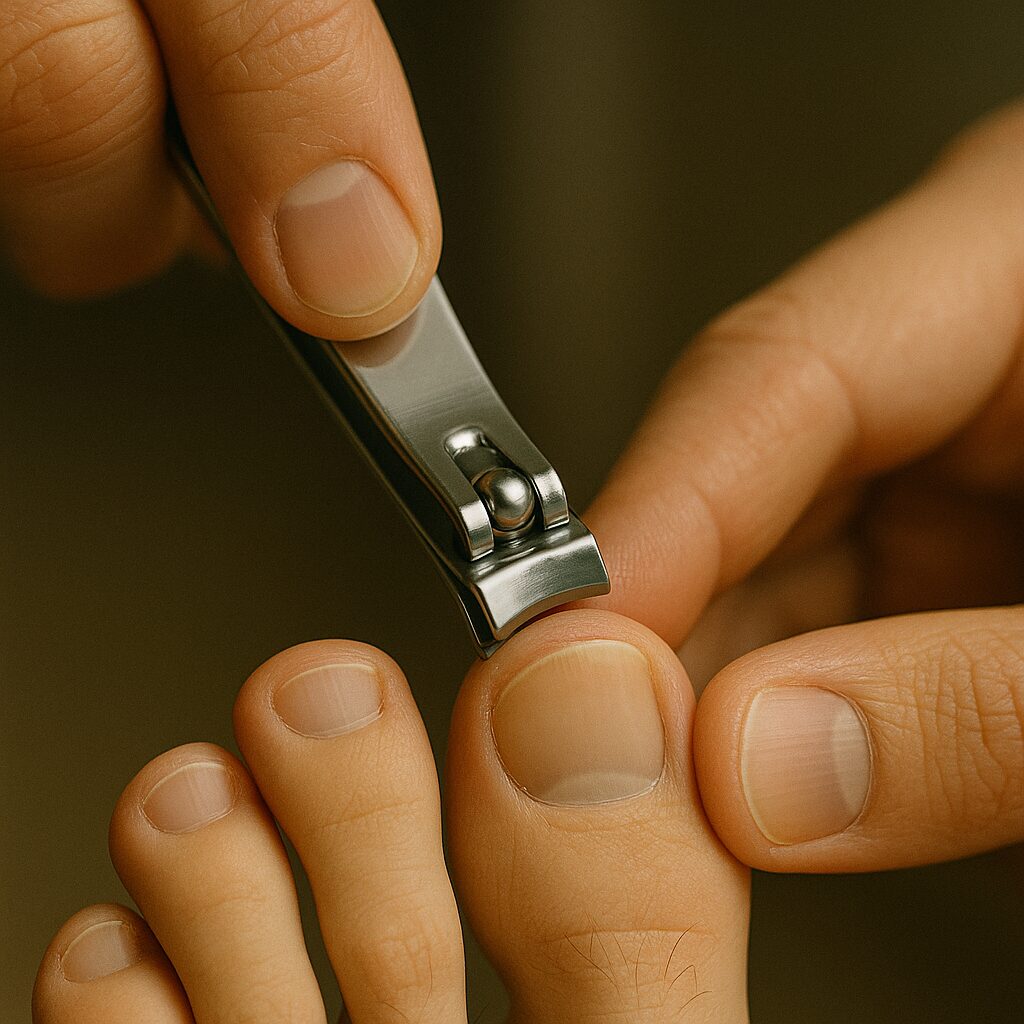
Conclusion
Ingrown toenails are painful but manageable with home remedies like warm soaks, ointments, and proper footwear. If symptoms worsen or infection sets in, consult a doctor immediately.
With proper nail care and prevention, you can avoid ingrown toenails and keep your feet healthy.

